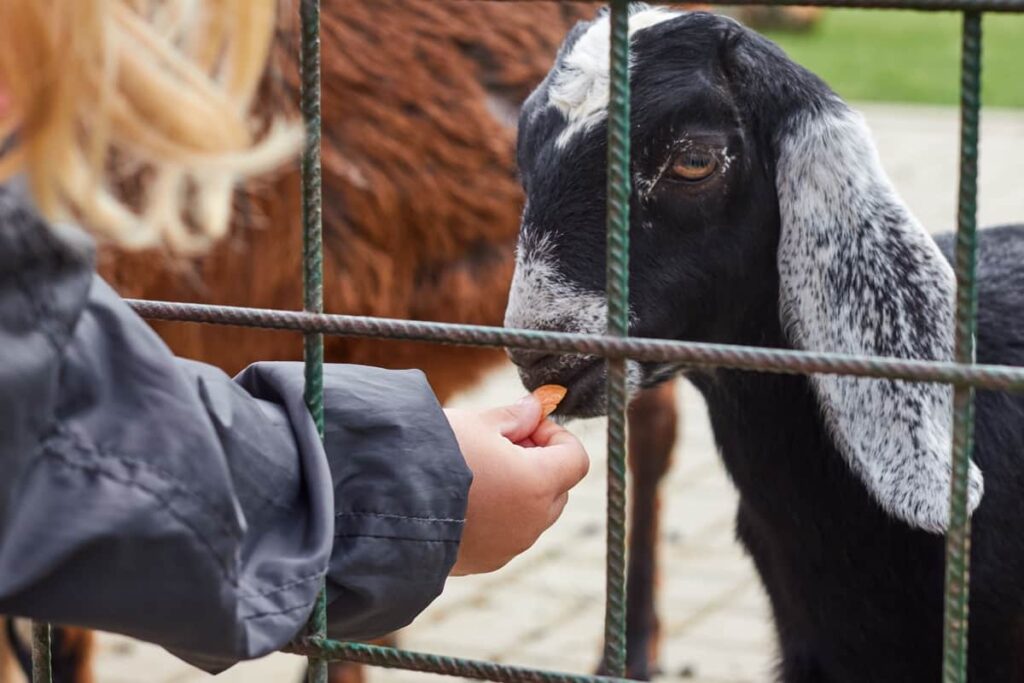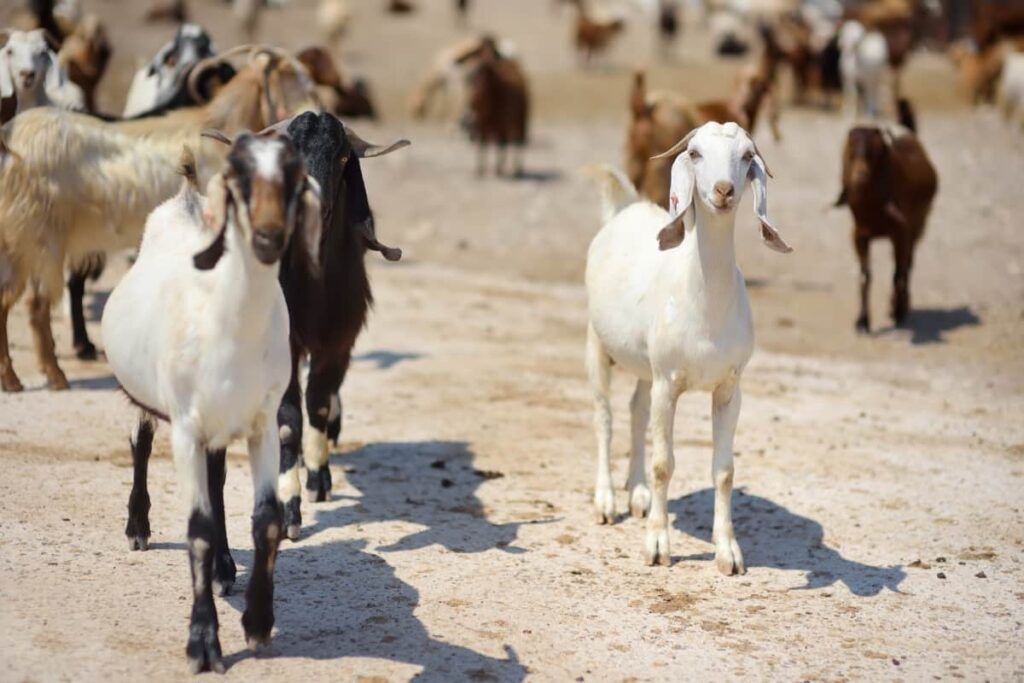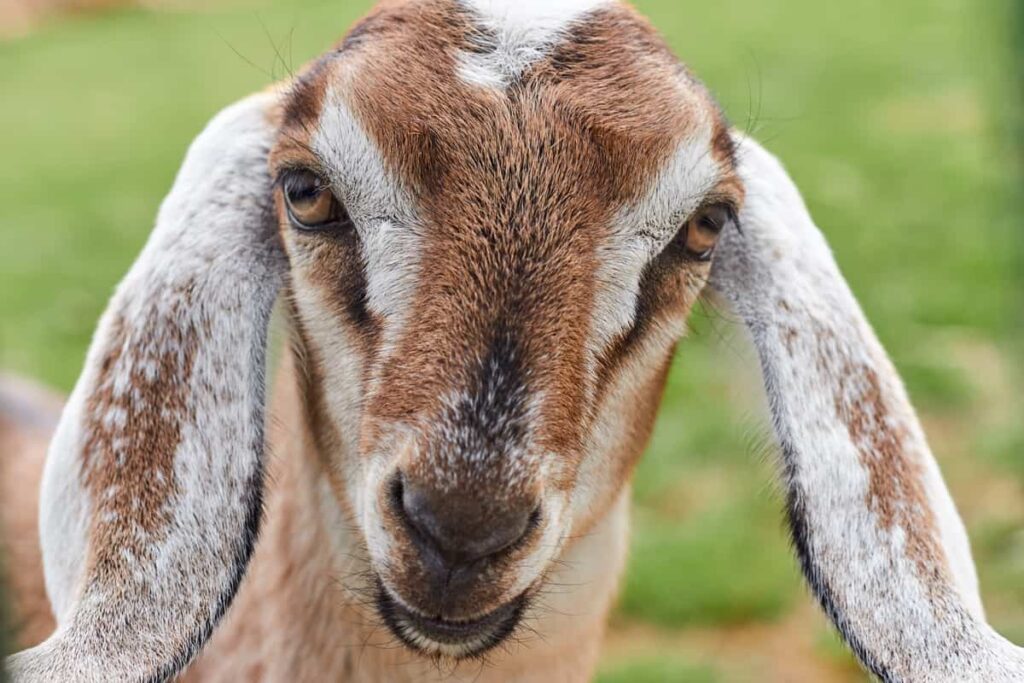The Kota goat breed has proved itself as one of the most profitable breeds in India when it comes to commercial livestock farming. This breed is large and is also a good dairy type. The locals have raised these goats for years for milk, meat, and skin production.

Housing Management for Kota Goat Farming
- These goats are reared for multiple purposes, requiring proper housing arrangements to ensure their well-being and productivity. The shelter should be spacious enough to accommodate the herd comfortably.
- The ideal housing structure for Kota goats should have good ventilation and adequate lighting. Proper ventilation ensures that the air inside is fresh all day, while adequate light helps keep the house dry and warm.
- Protecting your goats from harsh environmental factors like wind drafts or high humidity is crucial during extreme weather conditions. This can be achieved by installing appropriate insulation materials in the roofing system of your goat’s house.
- Keeping a clean environment within the shelter area is also important, as unclean surroundings may lead to various health issues. Cleaning regularly reduces risks related to diseases that might affect not just one but many animals at once.
How to Start a Kota Goat Farm?
- First, research your area’s demand for goat milk, meat, and skin. This will help you determine how many goats to start with.
- Next, choose a suitable location for your farm that is easily accessible by road and has adequate space for grazing and housing facilities. Provide shelter from harsh weather conditions like rain or extreme heat to keep the goats comfortable.
- When selecting breeding stock, look for healthy animals free of diseases such as mastitis or foot rot. You should also consider their pedigree records before making any purchases.
- Proper feeding is essential in maintaining healthy goats. Ensure they have access to clean water at all times and provide them with quality feed rich in minerals, vitamins & proteins.
- Learn about basic healthcare practices such as vaccinations against common diseases like pneumonia or tetanus to ensure optimal herd health.
Feeding Tips for Kota Goat Farming
- Proper nutrition is vital to these goats’ overall health and productivity. A well-balanced diet is essential for growth, reproduction, and milk production.
- Kota goats are ruminants and require a diet rich in fiber. Feeding them good quality hay or pasture grass can provide the necessary nutrients to thrive. Additionally, it’s important to supplement their diet with concentrated feed that contains protein, vitamins, and minerals.
- It’s also essential to ensure the water supply is adequate for the goats throughout the day. Freshwater should always be available as dehydration can lead to various health problems.
- Overfeeding or underfeeding can have negative consequences on goat health and productivity. Therefore, monitoring their feeding habits closely ensures they receive proper nutrition without overeating.
- Providing a well-balanced diet along with fresh water helps maintain healthy animals while maximizing their milk production potential. Attention to detail when feeding will positively impact your herd’s overall performance levels ensuring success in your Kota goat farming venture.
Best Practices for Kota Goat Farming
- Kota goat farming requires the right practices to ensure the goats are healthy and productive. The first thing you need to do is provide a proper shelter for your goats. A well-ventilated, spacious, clean house with enough light should be built for them.
- Feeding is another important aspect of Kota goat farming. Their diet should include dry roughage such as hay or straw, concentrated feed like grains, fresh green fodder, and water. Proper feeding will help maintain their health and enhance milk production.
- Maintaining hygiene is essential in Kota goat farming since good sanitation helps prevent diseases among the herd. Regular cleaning of sheds, equipment, and surroundings can help keep parasites away from the animals.
- Regular veterinary check-ups must also be conducted to ensure your goats are always healthy. Vaccinations against common diseases like Foot-and-Mouth Disease (FMD), Peste des Petits Ruminants (PPR), Brucellosis, etc., should also be scheduled regularly.
- With proper management techniques, this type of farming can provide a sustainable income source while promoting rural development through job creation opportunities.
In case you missed it: Kiko Goat Farming: A Comprehensive Guide

Kota Goat Weight
- The body weight of Kota goats is an essential factor to consider for breeders. It determines the health and productivity of the animals. The male Kota goats have an average body weight of 50-55 kgs, while females weigh around 40-45 kgs.
- To maintain a healthy herd, it’s crucial to monitor their weight regularly. Proper feeding and care can ensure that the animals reach their ideal weight according to age and gender.
- Kota goat farmers should provide balanced diets rich in protein, vitamins, and minerals. They should also ensure that the animals have access to clean water.
- Moreover, regular exercise is necessary for maintaining muscle mass and overall fitness in these goats. Herders should create enough space to move freely within their living quarters or pasture.
Health Care Tips for Kota Goats
- Maintaining the health of your Kota goats is crucial for their productivity and longevity. Regular check-ups by a veterinarian can help you identify and treat any potential medical issues before they become more serious.
- One important aspect of goat health care is ensuring proper nutrition. A balanced diet with protein and minerals will keep them healthy and productive. You should also provide clean water at all times.
- In addition to feeding, it’s essential to maintain good hygiene in your goat farm. Keep the barn clean and dry, remove any manure promptly, and disinfect surfaces regularly to prevent the spread of disease.
- Another key element of health care for Kota goats is parasite control. Parasites like worms can affect their growth rate, milk production, and health. Work with your veterinarian to develop an effective deworming plan based on the specific needs of your herd.
- Regular vaccinations are necessary to protect against common diseases. Consult with your vet about which vaccines are recommended for your area.
In case you missed it: Khari Goat Farming: A Comprehensive Guide

Conclusion
Today, Kota goat farming has become an important source of income for many small-scale farmers in Rajasthan. This traditional goat breed is known for its large size, high milk production, and delicious meat. Despite being around for quite some time now, Kota Goat farming remains a profitable venture today due to its versatility and adaptability to different climates and environments.
Note: The images presented in this post are intended solely for representation purposes. The images are meant to serve as visual aids and should not be relied upon as accurate representations of their real-life counterparts.
I wont know more details and wont to start goat forming in terrist in very small place how to make